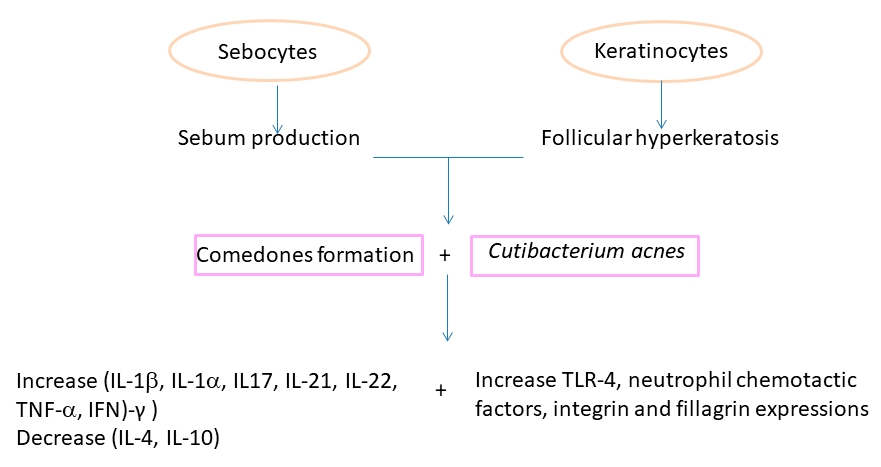Creative Biolabs provides TNFα monitoring assays to expedite the discovery of treatments for acne and hyper/hyposeborrhea.
Acne, a complex disorder, arises from a convergence of various factors, including stress, hormonal shifts, and dietary modifications. Pathologically, acne manifests as an inflammatory condition affecting the pilosebaceous units, comprising the hair follicle, shaft, and sebaceous gland. Perturbations such as heightened sebum production (hyperseborrhea), aberrant cutaneous cell shedding (hyperkeratinization), accumulation of Cutibacterium acnes within the pilosebaceous unit, and inflammation are pivotal in disrupting sebaceous gland function and precipitating acne development. The detection of C. acnes incites an immune-mediated inflammatory response, prompting the release of inflammatory cells like lymphocytes and neutrophils, which in turn discharge inflammatory molecules including reactive oxygen species (ROS) and tumor necrosis factor-alpha (TNFα). Consequently, these inflammatory mediators exacerbate inflammation and induce chemical damage to the follicular epithelium and nearby dermal regions.
 Fig. 1 Diagram illustrating the molecular pathways implicated in acne vulgaris.1
Fig. 1 Diagram illustrating the molecular pathways implicated in acne vulgaris.1
TNFα, an inflammatory cytokine, serves as a biomarker for assessing the efficacy of prospective treatments for acne and hyper/hyposeborrhea in sebocyte cultures. iPSCs, or induced pluripotent stem cells, are human somatic cells reprogrammed to a pluripotent state. These cells hold promise as potential patient-specific cell therapies or as disease research models. Through our induction techniques, we can generate sebocyte cells, providing valuable resources for investigating targeted medications for acne and seborrheic dermatitis. We provide a comprehensive and detailed protocol for conducting TNFα monitoring experiments.

iPSC-derived sebocytes are cultivated in the company of an inflammatory combination and the experimental substance for 24 hours. Tissue media is harvested for phenotype assessment using a multiplex ELISA platform. Quantification of each analyte will be conducted by extrapolation against a standard curve constructed on the identical 96-well analysis plate.
To pioneer novel avenues in scientific exploration within the domains of acne and hyperseborrhea, particularly in the evaluation and discovery of active pharmaceutical agents, Creative Biolabs introduces an innovative human sebocyte model derived from iPSCs. Recognized for their heightened genomic stability, ample availability, and outstanding inter-batch reproducibility, iPSC-derived cells stand as a resilient resource for investigating treatments for acne & hyper/hyposeborrhea. For additional details or personalized services, feel free to contact us.
Reference
For Research Use Only. Not For Clinical Use.